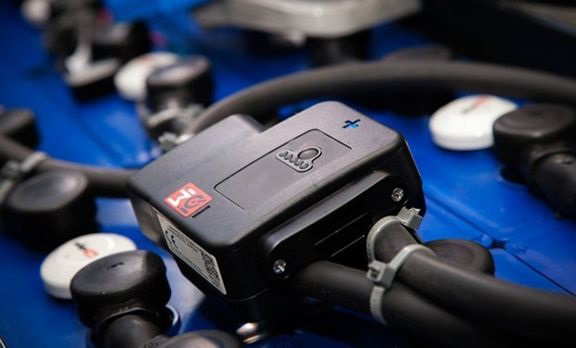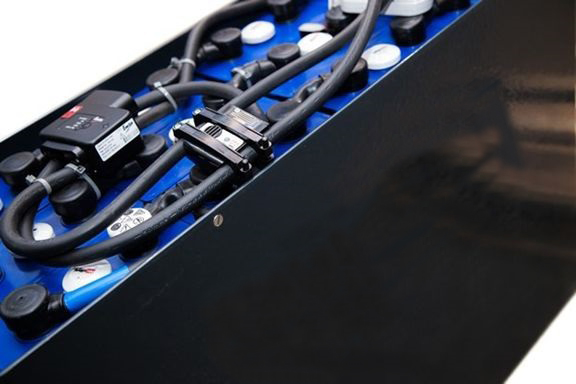Winter Is Coming, How To Protect The Power Of Lead-Acid Batteries
Sep 02, 2023At present, lead-acid power batteries are the main batteries of industrial electric vehicles. Proper maintenance (including proper charging) is the key to ensuring maximum power output, operating time and service life of the power battery. Here are 10 strategies to help you use and protect your battery properly, extending battery life and power.

1. Read the battery manual
In addition to basic maintenance suggestions, the battery manual also provides detailed product information and operation points. Improper operation may void the warranty. If you are unsure or in doubt, you can seek the guidance of battery professionals.
2. Avoid over-or under-adding water
The plate electrode in the battery is suspended in the acid liquid, and the acid liquid level will gradually decrease, so it is necessary to replenish water in time. However, it should be noted that there is no need to replenish water during the first ten cycles of the battery. If the liquid level is too low, the plate will be irreversibly damaged due to contact with air, resulting in reduced capacity, shortened service life, and may also cause the battery to overheat. If too much water is added, acid leakage may occur during the next charging due to electrolyte expansion. The loss of acid will shorten the running time and also cause overheating. This situation is a major cause of poor battery performance, damage or early failure. When adding water, deionized or distilled water should be added to the maximum level mark. Adding water should be carried out immediately after charging, or 20 minutes before the end of charging, when the acid overflow stage has passed. Do not add water before charging begins. However, if the surface of the plate has been exposed from the acid, you can add some water before charging, so that the plate is immersed in the acid. To save time, consider an automatic water filling system. But if you are using a VRLA battery, there is no need to add water or worry about leaking acid.
3. Check the electrolyte
The requirements for checking the electrolyte level only apply to the liquid-rich battery, which should be checked once every ten times of charging. As the battery gradually ages, the water consumption increases, so the frequency of adding water should also increase accordingly. Increase the frequency of monomer checks to see if it is necessary to add water. In routine maintenance, the specific gravity of the electrolyte of each monomer is required to be measured once a month. If the electrolyte specific gravity difference between monomers is large, equalizing charge is required. It is also possible to check whether equalization is required by measuring the difference in the open circuit voltage of the cell. If an automatic monitoring device is used, the open circuit voltage of the cell can be easily measured.

4. Note the charge
Do not discharge the battery deeper than 80% of the rated capacity. Excessive discharge can damage the battery, shorten the battery service life, and cause overheating of the accessories. Advanced lead-acid battery technology, such as sheet pure lead, can be randomly charged frequently to keep the charge at a high level, and the performance will be better. Whether it is a sealed battery or a liquid-rich battery, when the charge drops to 20%, it should be charged immediately, otherwise, a long time of insufficient charge is easy to cause sulfation, sulfation process, the surface of the plate will form sulfate crystals, resulting in plate capacity loss. This phenomenon is a major cause of battery damage. Therefore, the battery must be fully charged before storage.
5. Watch the temperature
When the battery is stored, charged, and used, the overheat and undercool temperature will limit the performance of the battery and shorten the service life of the battery. Please refer to the acceptable and optimal temperature range clearly defined in the product specification. In general, when the battery temperature is lower than 10 ° C or higher than 45 ° C, it is strictly prohibited to charge. If you find that the battery is overheated or smells obvious sulfuric acid while using or charging, stop immediately and seek advice. After the battery is fully charged, it should be placed for a few hours to cool down before being used again. Storage of batteries should be placed in a cool place to reduce self-discharge. Liquid-rich and valve-controlled lead-acid batteries, such as the use of special charging curves, can be applied to cold storage and other cold environments. Please check with your local supplier for the most suitable batteries and chargers for your specific environment.
6. Be clean and tidy
Use an approved cleaning solution to treat a small amount of acid spilled from a rich battery. Overflow acid will not only corrode terminals and other structural parts, but also form conductive circuits, resulting in power loss. Moisture will have a similar effect on liquid-rich and sealed batteries, so the battery, box and surrounding should be kept clean and dry. Regularly inspect all battery and charger plugs, connecting cables and outlet cables for corrosion, wear and damage, including whether there are exposed wires, loose accessories, etc. Check by electrical professionals at least once a year, including the measurement of vehicle and battery insulation resistance.
7. Control charging time
After the traditional lead-acid battery is charged, it must not be stopped halfway, and each charge should be full. When disconnecting, the power supply of the charger should be turned off first, and it is best to place it for 5 minutes before disconnecting it with the charger. In addition to equalization, overcharging will cause waste and damage the battery. Some battery users use the shift interval time for random charging, if the use of fast charging, the resulting overheating will shorten the service life, for traditional lead-acid batteries, this is not recommended, and the sheet pure lead battery is an exception, sheet pure lead technology allows rapid random charging, as long as the battery is regularly fully charged, Fast random charging does not cause damage or affect cycle life.

8. Charge, desulfurization, maintenance charging
Battery cells may differ in voltage and capacity. This situation can be balanced by equalization: generally every five to ten charging cycles should be calculated according to the slight overcharge, charging termination voltage is higher than the normal voltage level. When the liquid-rich battery is charged, the electrolyte can be "stirred" to restore the electrolyte to a more uniform and effective level, and the sulfate crystals on the plate can be eliminated. For batteries equipped with an electrolyte circulation system, this effect can be achieved by stirring the gas filled with a single cell. The balanced charging time is long, and the cooling time after charging is also long, so it should be carried out on the weekend when there is enough time. Refer to the specific battery equalization instructions, and pay attention to whether there is overheating during equalization. Please note that some chargers (Hawker HF Smart Chargers) have an automatic equalization function. Some chargers have a desulfurization charging function. This function should be used before normal charging, but should only be used when needed. There are also specialized machines that use high-frequency electrical pulses to eliminate sulfate crystals. But high sulfation is irreversible.
9. Choose the right charger
For optimal battery health and maximum performance, battery and charger cables, connectors, rated voltage, rated current, charge curves, and Settings need to be fully compatible. The easiest way to do this is to use the combination recommended by the battery manufacturer. Sometimes, this requirement is also a condition of the battery warranty. Replacing the traditional power frequency charger is not only good for the battery, but also can improve the operating efficiency. High frequency (HF) chargers are more efficient, softer on the battery, and the current is always on demand. Some high-frequency chargers use a modular power design, which further improves efficiency. To take full advantage of advanced sheet pure lead batteries (TPPL), your charger also needs to be fast charging. Use intelligent high frequency charger to reduce the probability of human error. This charger can automatically identify the type of battery, and measure the voltage, capacity, charge, temperature and other parameters. The smart high frequency charger uses the ideal charging mode and automatically switches the power supply at the optimal time.
10. Automated battery management
Automatic battery management monitoring device. This device will report temperature, voltage balance, electrolyte level, etc. in real time, will also sound alarms, and provide a useful history of the battery for analysis, so as to facilitate optimal management and efficient use of the battery.
All series of NEOlift products, including Electric Counterbalance Forklift, Material Handling Equipment, and others electric products all need to be subject to the above rules of use.